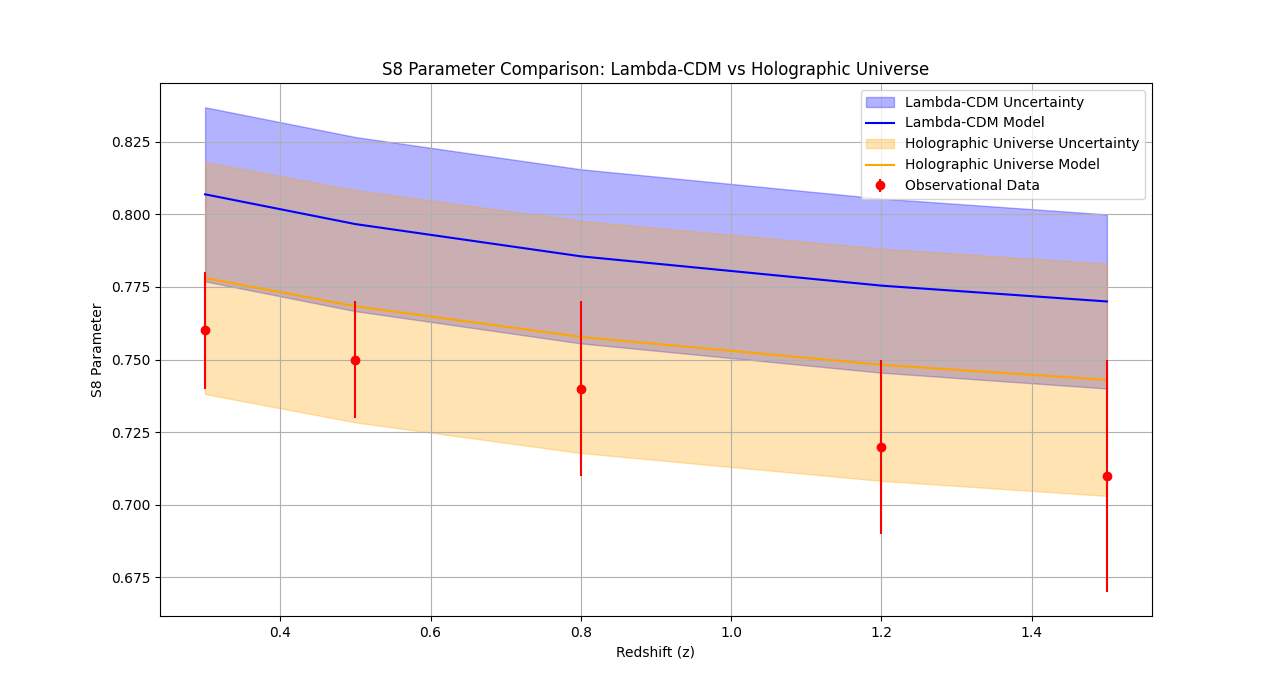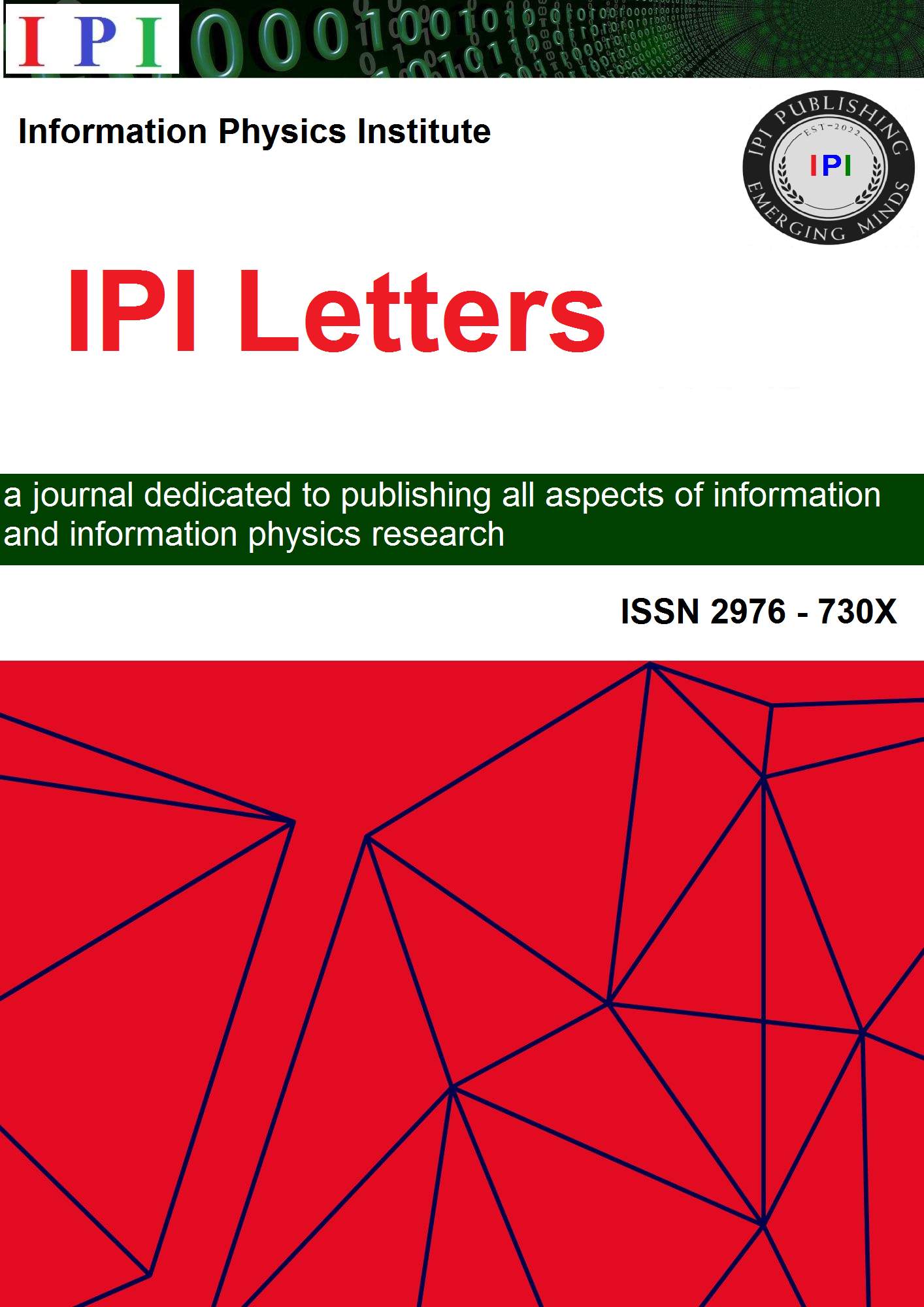Holographic Information Rate as a Resolution to Contemporary Cosmological Tensions
DOI:
https://doi.org/10.59973/ipil.170Keywords:
Holographic Universe, Cosmic Evolution, Baryon acoustic oscillation, Dark energy survey , Information theoryAbstract
We present a unified theoretical framework based on the recently discovered holographic information rate γ = 1.89 × 10−29 s−1 that simultaneously resolves multiple tensions in contemporary cosmological observations. This fundamental information processing rate, which maintains a precise relationship with the Hubble parameter (γ/H ≈ 1/8π), provides a natural explanation for discrepancies in the baryon acoustic oscillation (BAO) scale, the S8 parameter, and matter density measurements. We derive modified evolution equations incorporating information-theoretic constraints and demonstrate quantitatively how these modifications resolve current observational tensions while preserving the successes of the standard ΛCDM model. Our framework makes specific, falsifiable predictions for future observations, including precise values for correlation function modifications and scale-dependent corrections to structure formation. Statistical analysis using current observational data shows significant improvement in model fits compared to standard ΛCDM, with Bayesian evidence strongly favoring the holographic framework. The theory’s ability to resolve multiple independent tensions through a single fundamental parameter suggests a deeper connection between information processing and cosmic evolution.
References
Planck Collaboration, N. Aghanim, Y. Akrami, M. Ashdown, J. Aumont, C. Baccigalupi, M. Ballardini, A. J. Banday, R. B. Barreiro, N. Bartolo, et al., “Planck 2018 results. VI. Cosmological parameters,” Astronomy & Astrophysics 641, A6 (2020). doi:10.1051/0004-6361/201833910
DES Collaboration, T. M. C. Abbott, M. Aguena, A. Alarcon, S. Allam, O. Alves, A. Amon, F. Andrade-Oliveira, J. Annis, S. Avila, et al., “Dark Energy Survey Year 3 Results: Cosmological Constraints from Galaxy Clustering and Weak Lensing,” Physical Review D 104, 022003 (2021). doi:10.1103/PhysRevD.104.022003
B. Weiner, “E-mode Polarization Phase Transitions Reveal a Fundamental Parameter of the Universe,” IPI Letters (2025). doi:10.59973/ipil.150
M. Asgari, C.-A. Lin, B. Joachimi, B. Giblin, C. Heymans, H. Hildebrandt, A. Kannawadi, B. St¨olzner, T. Tr¨oster, J. L. van den Busch, et al., “KiDS-1000 Cosmology: Cosmic shear constraints and comparison between two point statistics,” Astronomy & Astrophysics 645, A104 (2021). doi:10.1051/0004-6361/202039070
S. Alam, M. Ata, S. Bailey, F. Beutler, D. Bizyaev, J. A. Blazek, A. S. Bolton, J. R. Brownstein, A. Burden, C.-H. Chuang, et al., “The clustering of galaxies in the completed SDSS-III Baryon Oscillation Spectroscopic Survey: cosmological analysis of the DR12 galaxy sample,” Monthly Notices of the Royal Astronomical Society 470, 2617–2652 (2017). doi:10.1093/mnras/stx721
eBOSS Collaboration, S. Alam, M. Aubert, S. Avila, C. Balland, J. E. Bautista, M. A. Bershady, D. Bizyaev, M. R. Blanton, A. S. Bolton, et al., “The Completed SDSS-IV extended Baryon Oscillation Spectroscopic Survey: Cosmological Implications from two Decades of Spectroscopic Surveys at the Apache Point observatory,” Physical Review D 103, 083533 (2021). doi:10.1103/PhysRevD.103.083533

Downloads
Published
How to Cite
Issue
Section
License
Copyright (c) 2025 Bryce Weiner

This work is licensed under a Creative Commons Attribution 4.0 International License.














